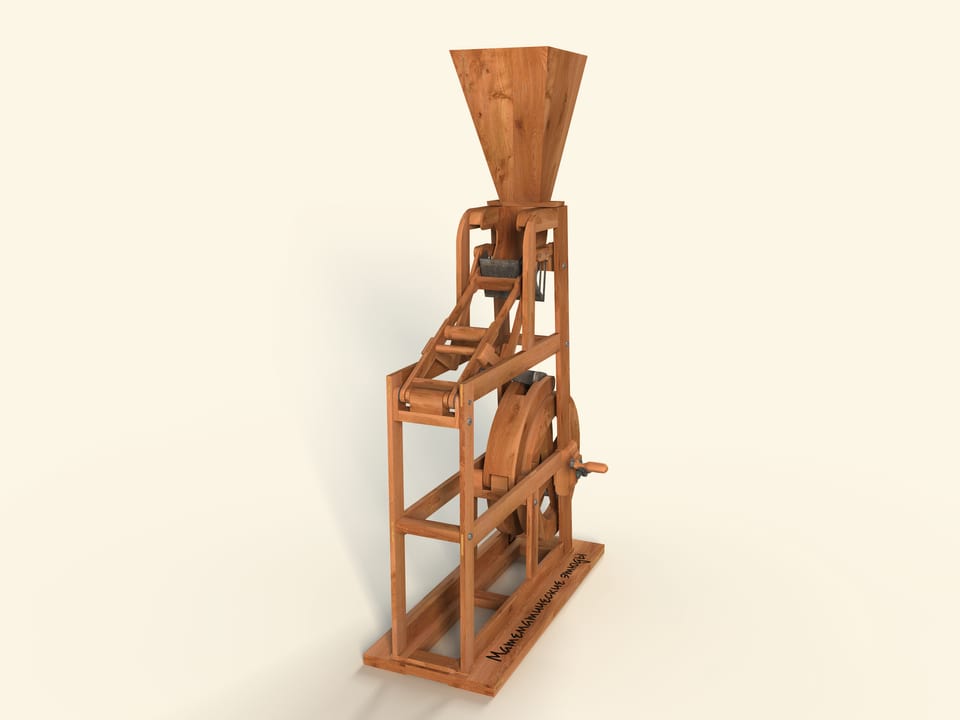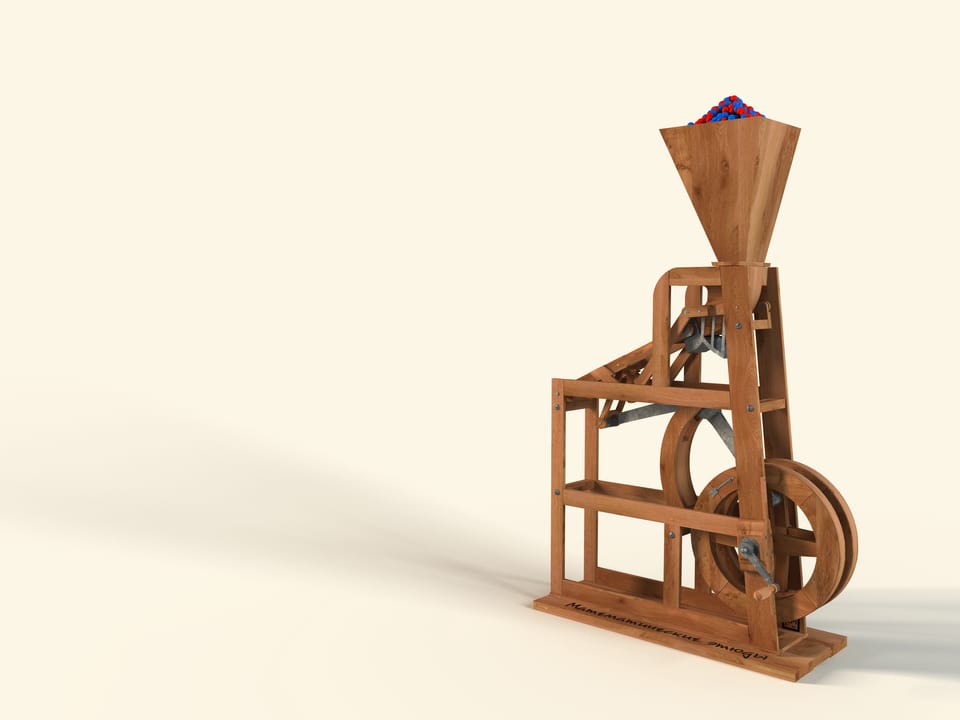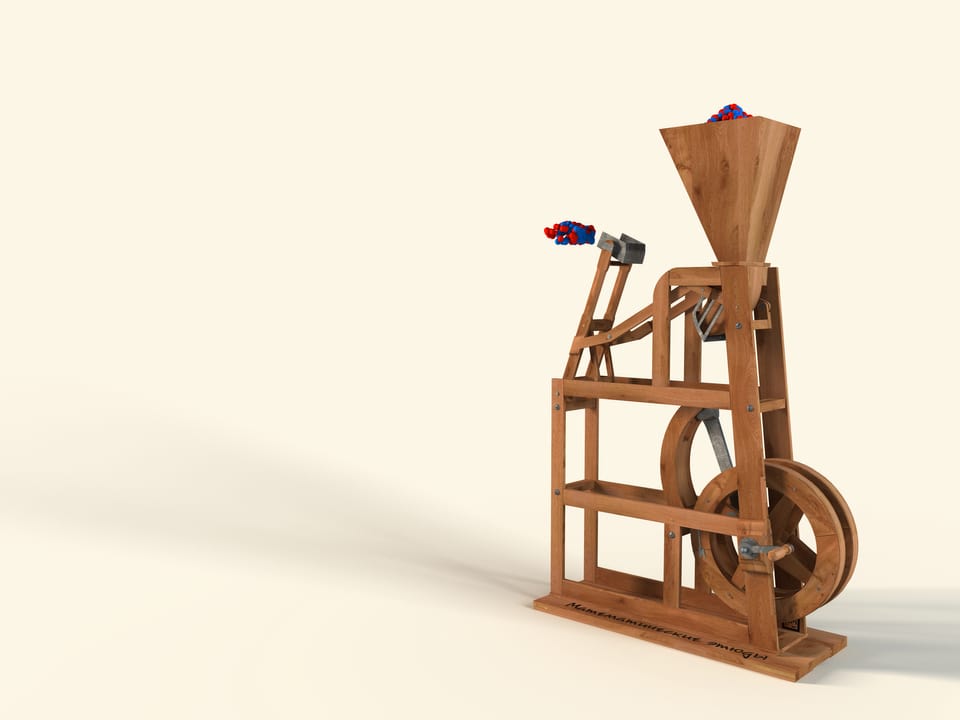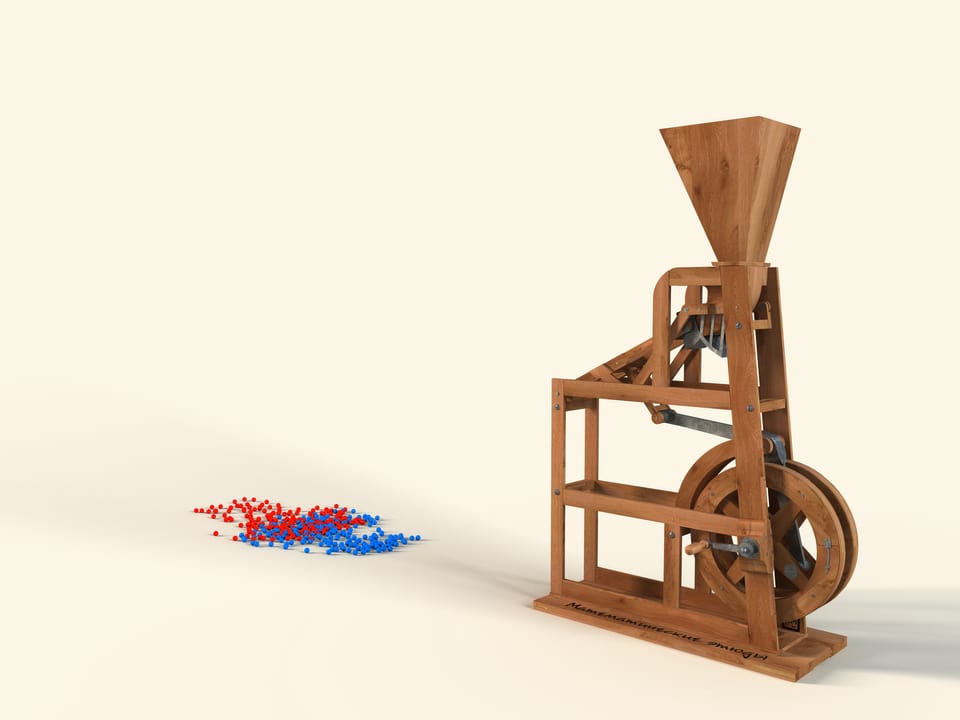Consider a kind of lambda mechanism that translates the uniform motion of a gray hinge around a circle into the motion of a blue hinge along some curve.
The parameters of the mechanism are chosen so that part of the trajectory of the blue hinge is close to the arc of some circle. The movement along this part of the trajectory takes more than half of the time.
Let's add another link to the mechanism: ”the radius.” As the blue hinge moves along a segment of a trajectory close to a circle, the free end of the new link will oscillate about the center of that circle.
If the free end of ”the radius” controls the motion of another link, the yoke, it will remain stationary most of the time (in layman's terms, geometrically there will be small deviations), and then make a rapid full roll back and forth. As they say in mechanics, it's a mechanism with a long stop of the slave link at the end of its stroke.
This beautiful geometric idea was devised by the greatest Russian mathematician Pafnuty L. Tchebyshev to create an elegant mechanism, designed for the important practical task of sorting grain. Both in the 19th century and today, grain is sorted by weight in order to select the best - heavier - grains.
The grain was poured into a box. It has not survived and has been reconstructed from a photograph. Next, through a curved channel, the grain entered a tray attached to the end of the link, which had a long stop. Since the arm stop lasts more than half the time, during this interval the grain fills the tray. Rapid rolling back and forth will scatter the grain. To prevent the grain from spilling out of the box at the moment of rolling, to the kinematic scheme considered at the beginning of the film. The kinematic scheme in the mechanism is supplemented by another chain. ”A pickup,” attached to one of the links, blocks the exit from the box at the moment of rolling.
The sharp ejection from the tray sorts the grains by weight. The best — heavier — grains end up (on average) lying further away from the mechanism.
The bulk of the sorting machine is kept in the Museum of the History of St. Petersburg University, as is the photo of the university's mechanical cabinet (taken by B. N. Menshutkin in the end of the 19th century). Based on these sources, this video presents a working exact replica of the mechanism.





















